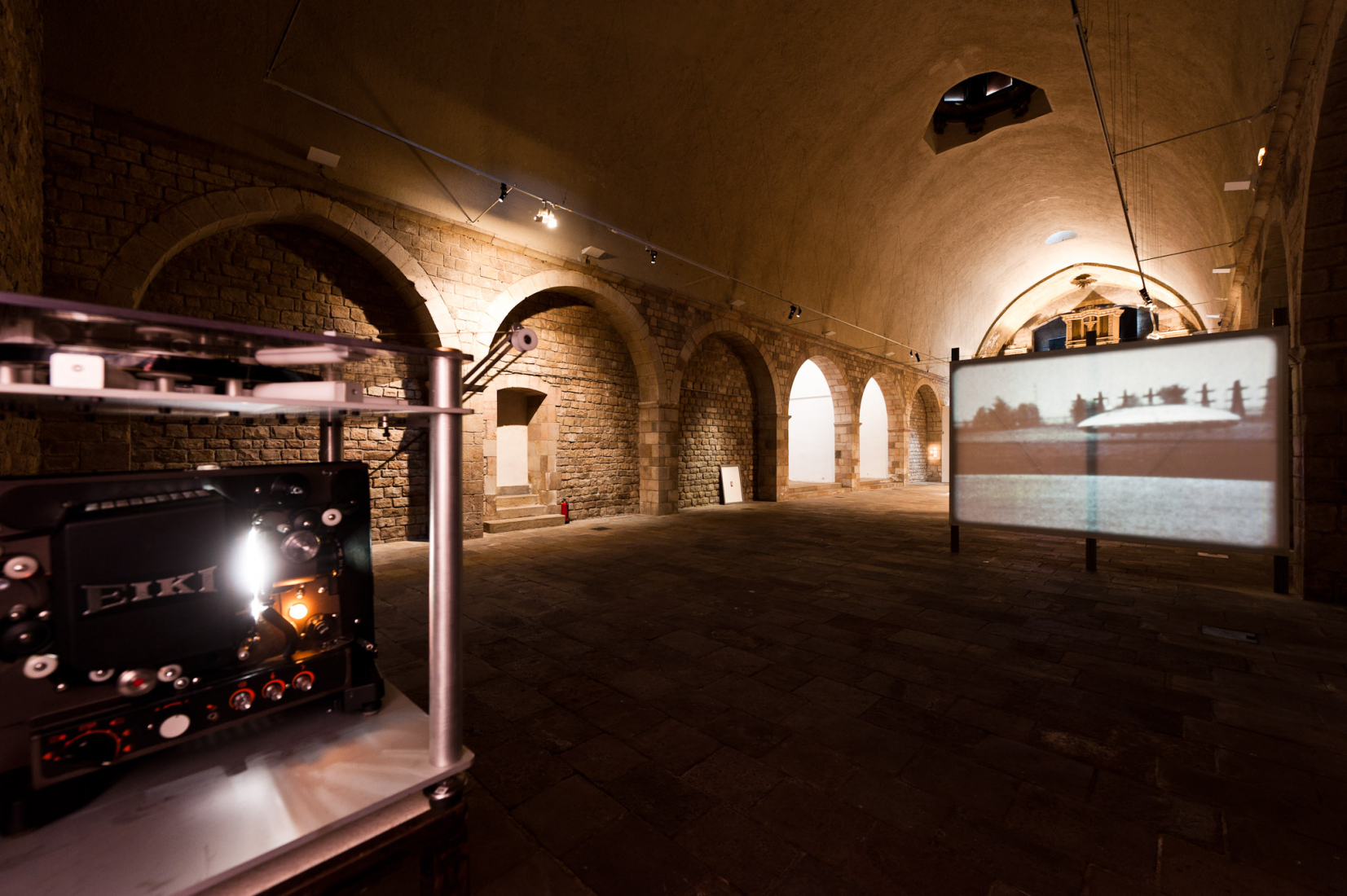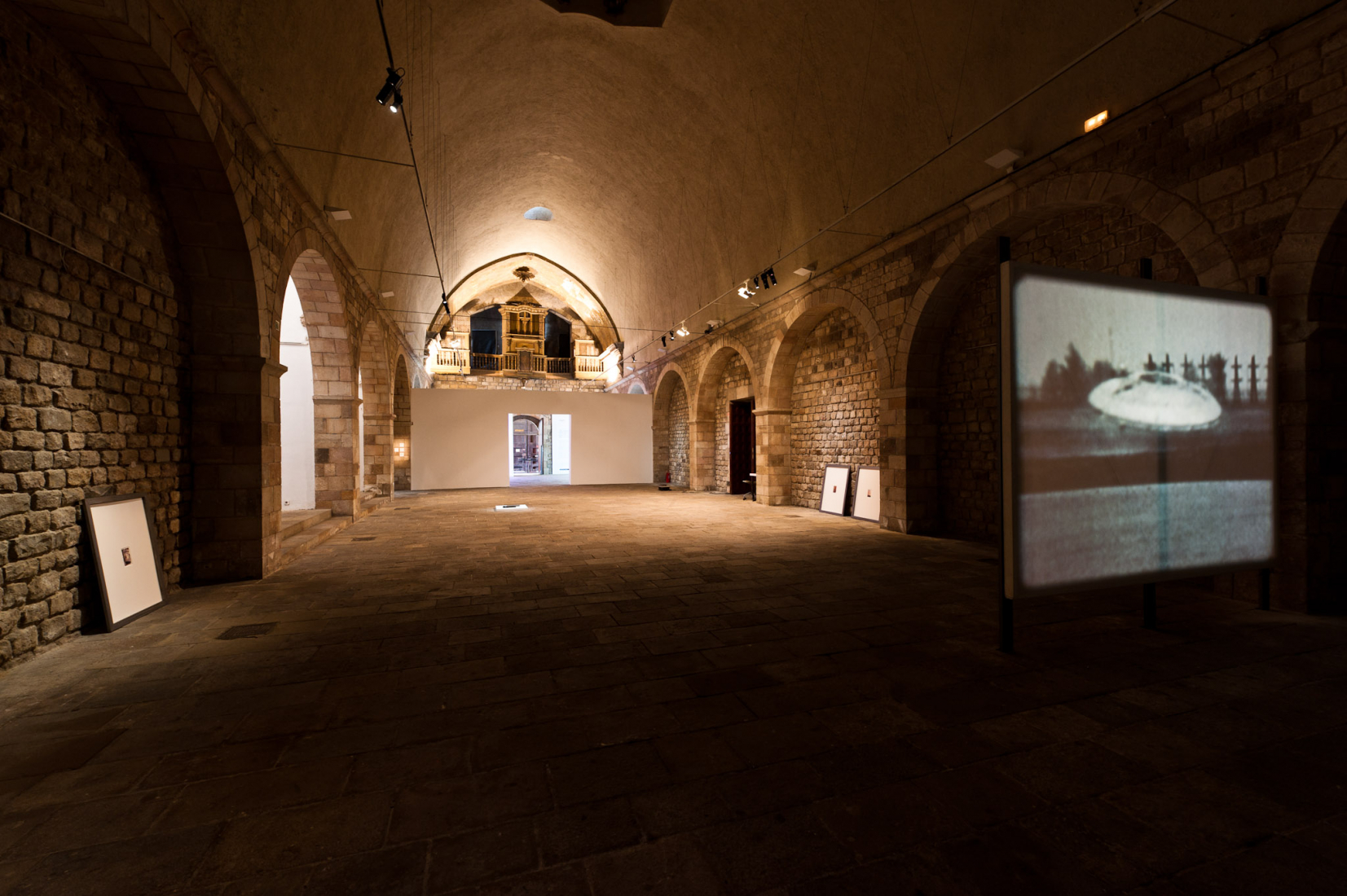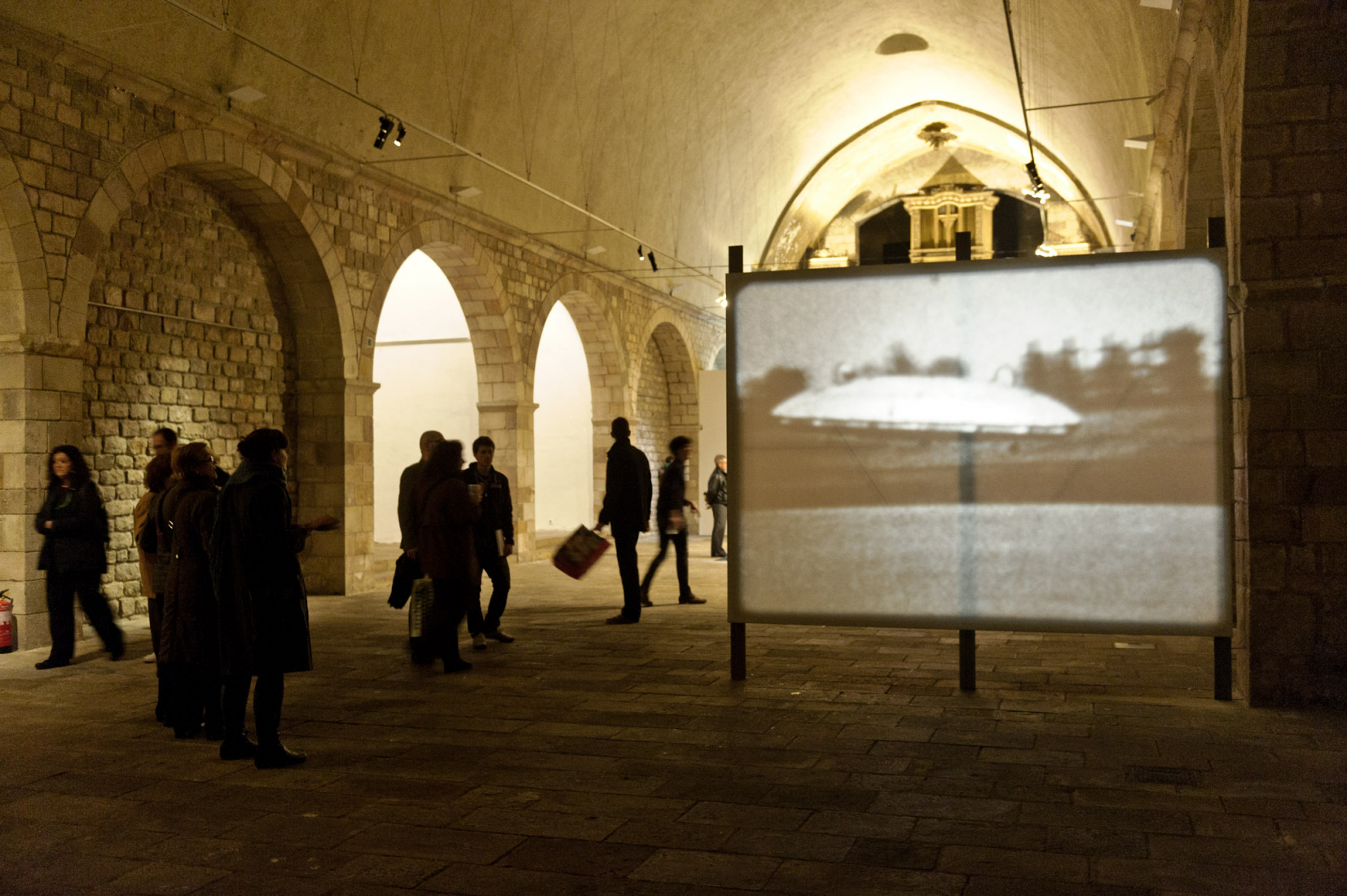Catalogació
EVA FÀBREGAS. (Barcelona, 1988)
While completing her studies in the Faculty of Fine Arts at the University of Barcelona, she is undertaking the project 1983-1936 (Sunila), which shall be exhibited in 2012 with the support of the Visual Arts Grant from the Marcelino Botín Foundation. Her work unfolds the historicity accumulated in chains of images, objects and forms that refuse to be deciphered. By appropriating science-fiction strategies, the artist interferes with these materials and generates unexpected en-counters, anomalies and leaps in time..
CATALOGACIÓ (CATALOGUING) On the occasion of BCN Producció ‘11
Sala Gran, 2011
Eva Fàbregas has produced a work for La Capella that revolves around the unexpected meeting of two historical moments in a film sequence. The centrepiece is a 16mm film entitled 1959-1895 (Avrocar) that records the erratic path of a futuristic aircraft. It concerns the Avro Canada VZ-9AV, an experimental prototype for a military aircraft developed in Canada during the early years of the Cold War, commissioned by the US military. Designed like a flying saucer, the craft loses control and, rather than lifting off, falls over and over again to the ground, kicking up dust along the way and drawing a diagonal line as it moves away from the camera’s position.
The film is taken from Library and Archives Canada (LAC) and comprises a single sequence only a few seconds in length, which corresponds to one of Avrocar’s failed flight tests in 1959 (only three years before the project was finally abandoned). By means of various editing cuts and progressively altering the pace of this film sequence, 1959-1895 (Avrocar) is built upon the fascination with the primitive texture of the images, as well as their historical indeterminacy and the particular way in which, by chance, they reverberate with the arrival of a train at La Ciotat Station in 1895. For a few seconds, the erratic path of the aircraft seems to replicate the motion, in reverse, of the Lumière brothers’ train in the beginnings of cinema. 1959-1895 (Avrocar) is based on this unexpected collision, in a single sequence of images, from the space age to the origins of cinema —in reverse time like science fiction travel: from the future to the past.
Around this sequence, Catalogació is a device comprising several independent elements that explore the transitions between frame and content, work and display. In this site-specific, the non-existent soundtrack of the Lumière brothers’ film has been re-enacted by means of another found element: the sound of a train included on a record in the Voyager space probe, launched from Cabo Cañaveral (Florida) in 1977. Containing 90 minutes of sound recordings, messages in different languages, photographs and other miscellaneous items from life on Planet Earth, the space probe sought to facilitate contact with hypothetical forms of extraterrestrial life. Detached from the images, a sound recording of the train has been disseminated throughout the exhibition space. The intersection of these cross-references starts a contagious chain-reaction, which infects to the rest of the pieces through derivations of a limited set of motifs and materials. On this occasion, the exhibition space at La Capella acts as a sounding board for a mechanism that comprises audiovisual and sculptural elements, overlapping various interrupted moments in history that pointed towards the future.
Acknowledgements: Oriol Barberà, Sabel Gavaldon, Jim Lloyd, Magellan Aerospace Corporation.
Colaborators





